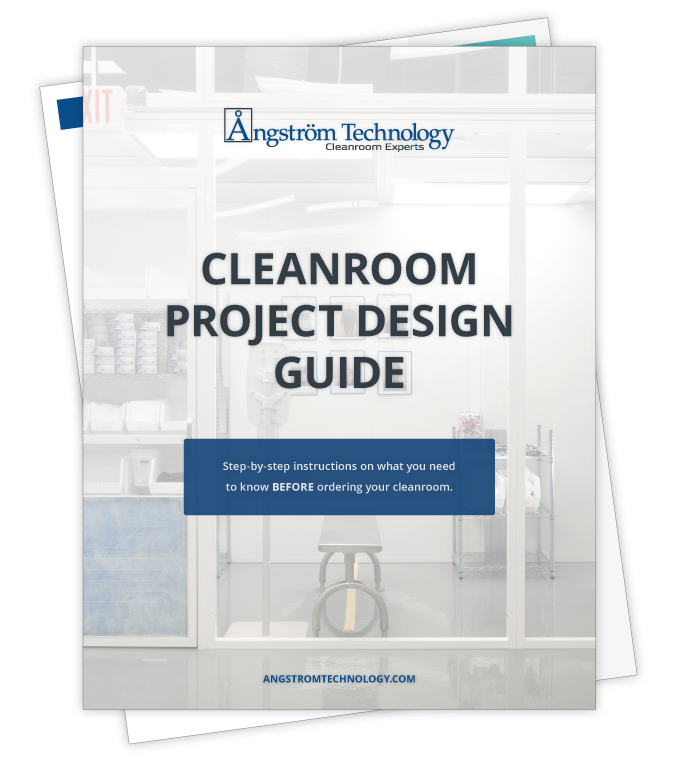In this article, we’ll explore the answer to that question. After we discuss what a plastics industry cleanroom consists of, we can discover how much one may cost you, depending on your unique specifications.
What Is a Plastics Industry Cleanroom?
Plastics industry cleanrooms are used for researching, developing, and assembling plastic components in a controlled, clean environment. Plastic products can be used for a number of industrial applications, so their cleanrooms vary in stringency based on that. For example, if your plastic components are used to make medical devices, you’ll need much more cleanliness regulation than another facility that uses plastic components to make furniture.
Regardless of the application, there is still some amount of regulation for each of them. This helps ensure the quality of end products and the safety of operators throughout various methods of plastic manufacturing, including:
- Injection molding – Melted plastic is injected into a set mold, fills the shape, and cools to permanent form.
- Extrusion molding – Melted plastic is pushed through a die, then cools in the desired shape.
- Rotational molding – Plastic powder is placed into a mold, then rotated until the plastic creates an outer layer with a hollow interior.
- Blow molding – Air pressure is used to shape melted plastic around a pre-shaped hollow plastic piece, which creates a cavity where the plastic has expanded around it.
Changes in temperature, humidity, pressure, or static during any of these processes can result in product defects and failures — potentially wasting your facility’s time and money or putting end consumers at risk of harm. A plastics industry cleanroom mitigates that risk by controlling all the environmental factors you need, to the amount you need them.
How Much Does a Plastics Industry Cleanroom Cost?
All that being said, it’s apparent that a plastics industry cleanroom could look like a lot of different things — and the same goes for the cost of that cleanroom. Because of this variation, it can be difficult to get a sense of what your cleanroom may cost before you outline your specific needs to an expert manufacturer. However, there are some key considerations that you can look at to give you a general guideline:
ISO Classification
Plastics industry cleanrooms are regulated by standards created by the International Standards Organization (ISO) — specifically by the ISO 146441-1 standard, which provides the particle count, air change rate, and ceiling coverage requirements for all cleanroom environments. ISO 146441-1 is split into nine separate classes, with 1 being the most filtered air, and 9 being equivalent to regular room air. Most plastics industry cleanrooms require an ISO Class of 7 or 8, but some applications that are more sensitive to contamination may bump requirements up to Class 5 or 6.
How does this relate to the cost of your cleanroom? The general rule is, the more stringent your cleanroom is, the more equipment it usually requires, and the more it will cost you.
Type
Another factor that determines your cleanroom cost is your choice between these three types of cleanrooms, which is heavily based on which ISO requirements you need to meet:
- SoftWall – Meets ISO Class 5-8 requirements, and is completely versatile and customizable to fit whatever space is needed.
- HardWall – Offers the highest level of control over the environment, and can uphold even the most stringent ISO Class 1 requirements.
- RigidWall – Meets ISO Class 5-8 requirements, and features a modern, transparent panel design.
In most cases, SoftWall cleanrooms are the most affordable cleanroom option, and you’ll pay extra for the additional structure, control, or design benefits of HardWall and RigidWall types.
Size
As you can probably imagine, size is the most easily understood factor to account for in terms of cleanroom cost. Simply put, the bigger your cleanroom is, the more expensive it will be. Cleanroom manufacturers usually account for the biggest piece of equipment (in terms of both width and height) that will be stored in it to determine your ideal sizing.
Design Complexity and Additional Features
The least expensive cleanrooms have basic layouts and no additional features or technologies. However, for many plastics industry applications, this just isn’t feasible. From added equipment, process piping, furniture, static control, access controls, and even attached gowning rooms, your cleanroom will likely need to accommodate specific design complexities that come at an additional cost.
Get the Most Out of Your Cleanroom at Angstrom Technology
All this being said, it’s important to get the cleanroom you need in order to manufacture, test, assemble, or package products safely and effectively. Budget is an important consideration in the design process, but you need to be sure to make a budget that accommodates all your needs — otherwise, you’ll end up wasting on a space that doesn’t work for you.
Trying to save on the costs of your cleanroom? Contact one of our experts at Angstrom Technology! Our team of experts will create custom designs to your exact specifications — both for your cleanroom classification and your budget.
Get Instant Access to Our Cleanroom Design Guide
The Most Comprehensive Guide for Cleanrooms and Modular Offices



